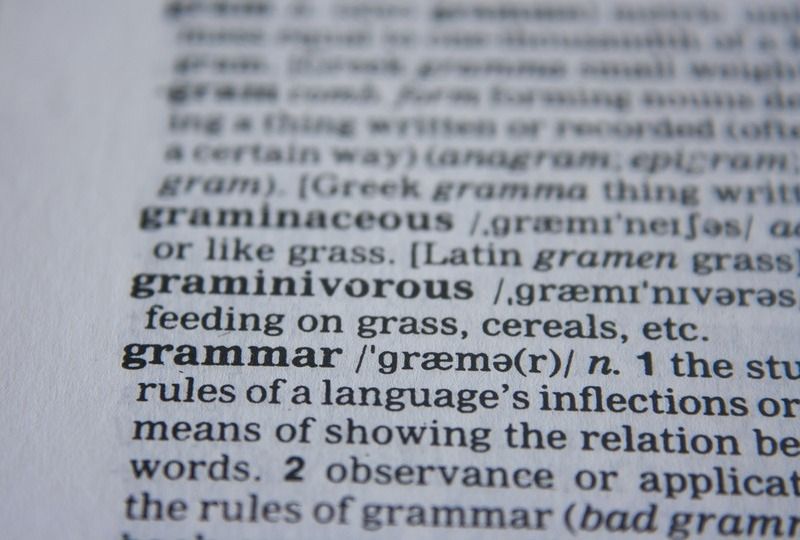5 Common Mistakes Even Native Spanish Speakers Make

Think about your native language. Is your grammar strong? It’s easy to think that native speakers in the language we are trying to learn have perfect grammar and make no mistakes, but this is rarely the case. Everyone has their own way of speaking, and we are all prone to errors even if we’ve been speaking a language for many years. In this article, we will go over a few common issues that native speakers struggle with in Spanish to help you learn the fine points of grammar and spelling.

1. Spelling Is Also a Struggle for Native Spanish Speakers
Spelling is the issue that native Spanish speakers seem to struggle with the most and with good reason! There are a few letter combinations in Spanish that can be tricky for natives and learners alike.
The first letter combination is ll and y. They both make a sound similar to an English y. In some accents, speakers distinguish between the two sounds slightly while in other accents, the letters make the exact same sound. Spellings should be memorized to avoid mistakes.
Another letter combination that can be difficult is z, c, and s. In Spain, z makes a sound close to the combination “th” in English. This is also the sound that the c in the combinations ci and ce would make in Spain. For that reason, it is easier to tell the difference between z, c, and s in the Peninsular Spanish accent. In Latin America, however, these three sounds are identical. Again, the most efficient way to spell words correctly with these letters is to memorize when z, c, and s are used, although there are a few patterns that can be memorized that use the same letter combinations. For example, many words that end in -tion in English end in -ción in Spanish, so memorizing this rule can help spell these types of words correctly.
The third letter combination that can be difficult to spell is qu and c. These letters will make a sound similar to a k or hard c in English. As we saw in the previous paragraph, c makes a soft, s-like sound when combined with i and e. When it is next to a, o, and u, the c will make a harder, k-like sound.
The final letter combination that can be tricky for Spanish learners and native speakers is b and v. They make an almost identical sound in all Spanish accents across the Spanish-speaking world. These words should be memorized.
Spanish is a relatively easy language to spell as there are few irregular spellings and many of the words are spelled as they sound. There are, as we have seen, certain combinations that can pose challenges on occasion. In addition to this letter combinations, some accents create challenges of their own. Caribbean Spanish tends to mix the letters r and l, and many accents drop the final s of words or the d between a and o in words like hablado. With time, exposure, and practice, anyone can master spelling in Spanish.

2. Words That Sound the Same in Spanish
On the same vein, when letter sounds are similar, words can be similar. A common mistake made by native speakers is the set ahí, allí, hay, and ay. They are all pronounced the same in most Spanish-speaking countries, however, they have different meanings. Here are the meanings of each:
Ahí: There, indicating a place that is somewhat near
Allí: There, indicating a place that is somewhat far
Hay: There are, referring to the existence of something
Ay: An expression of pain or surprise
Words that begin with silent h, as we can see from he last example, can be difficult. In this next example, we can see the silent h as an issue and the b and v sounds as difficult. A ver and haber tend to be difficult combinations for native speakers. Here is what they mean:
A ver: To see, used to ask someone if you can see or hold something
Haber: To exist

3. Gendered Words Are Challenging in Spanish
The next issue that learners and Spanish speakers struggle with is gender. Spanish is a gendered language. There are rules to follow, though some words have irregularities in their genders which can cause issues.
The key rule to follow is that masculine words end in -o and feminine words end in -a. In addition, the articles used for masculine words are un/unos (a/some) and el/los (the singular/the plural). The articles used for feminine words are una/unas (a/some) and la/las (the singular/the plural).
There are some words that do not follow these rules. Words that end in -ma are often from Greek and will be masculine words that end in a. For example, el problema and el drama. Some words are feminine, but because they start with the letter a, they use the masculine article to prevent the two a's from blending together. For example, saying el águila (the eagle) is neater and easier than saying la águila.

4. Pronunciation Issues Caused by Spelling in Spanish
As we went over earlier, it is common to omit the letters s and d in certain instances. This can lead to issues with pronunciation and spelling because when words are said incorrectly, they are frequently spelled incorrectly. Bacalao is a great example of a word that is spelled correctly without the letter d, but due to the knowledge that Spanish speakers often drop the letter d in some words, native speakers have been known to mistakenly add a d in this word, making up the word bacalado. The omitted s causes less issues because not all s's are omitted within a sentence and there are often other words that can let someone know that they are referring to the plural. For example, it is correct to say los niños (the boys), but if someone pronounced it as "lo niños", the omission of the s on los does not affect our understanding of what is being said because of the context. In any event, it is always best to try our best to spell words correctly and pronounce them completely.

5. Overusing the Gerund Should Be Avoided in Spanish
Another common mistake made by many native speakers is the over-use of the gerund -ando or -iendo to create what we would consider in English the -ing ending. It is very common to use the -ing ending in English to describe what people are doing in the moment, habitual action, and more. In Spanish, it is supposed to be limited to what a person is doing in that moment. This means that the English sentence "He's studying to be a doctor" would not translate with the gerund in Spanish if translated appropriately. The best translation would be "Él estudia para ser médico". The literal translation of this is "He studies to be a doctor." Saying that he is studying in Spanish would be reserved for moments when he is actively studying.

Find Your Own Style in Spanish
At the end of the day, every speaker of a language has their own style. Some speakers make mistakes knowing full well what they are doing, and they do so because of style, convenience, habit, and a number of other reasons. Do your best to study Spanish and know what the grammar rules are. Once you've mastered them, however, don't be afraid to break the rules. Have fun discovering your own unique style in Spanish!